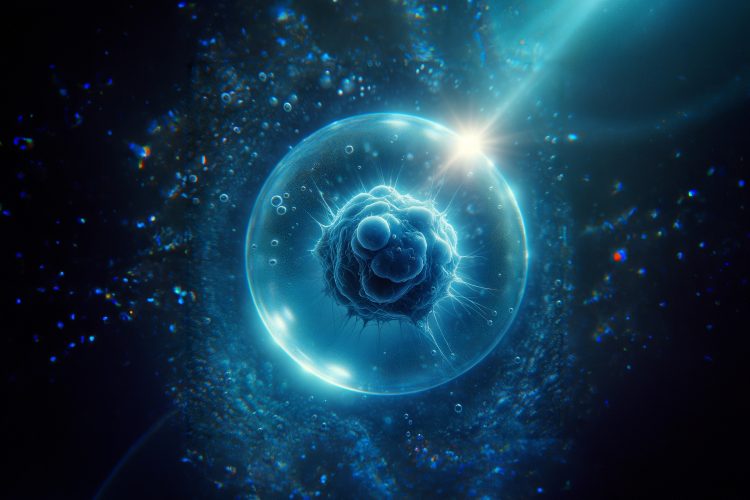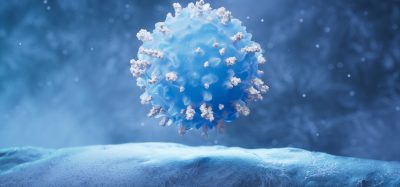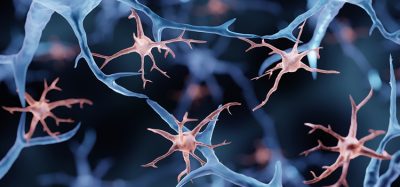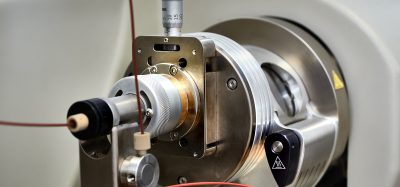New research shows squeezing cancer cells helps them survive
Posted: 1 August 2025 | Drug Target Review | No comments yet
Scientists have discovered that cancer cells generate an instant burst of energy when physically squeezed, helping them repair DNA damage and survive harsh environments. This discovery means that therapies targeting this new survival mechanism could be developed.


Cancer cells release a quick energy response when physically squeezed, according to a study published in the journal Nature Communications. The surge of energy is the first reported occurrence of a defensive mechanism that helps cells repair DNA damage and survive the crowded environments of the body.
The findings help explain how cancer cells endure mechanical challenges such as crawling through a tumour microenvironment, traversing through porous blood vessels or withstanding the battering of the bloodstream. The research could lead to new strategies to stop cancer from spreading.
Mitochondria act as “agile first responders”
The research, conducted at the Centre for Genomic Regulation (CRG) in Barcelona, used a specialised microscope to compress living cells to just three microns wide – which is about one-thirtieth the diameter of a human hair. Within seconds of being squeezed, mitochondria in HeLa cells moved to the surface of the nucleus and pumped in extra ATP – the cell’s energy source.
Biomarkers aren’t just supporting drug discovery – they’re driving it
FREE market report
From smarter trials to faster insights, this report unpacks the science, strategy and real-world impact behind the next generation of precision therapies.
What you’ll unlock:
- How biomarkers are guiding dose selection and early efficacy decisions in complex trials
- Why multi-omics, liquid biopsy and digital tools are redefining the discovery process
- What makes lab data regulatory-ready and why alignment matters from day one
Explore how biomarkers are shaping early drug development
Access the full report – it’s free!
“It forces us to rethink the role of mitochondria in the human body. They aren’t these static batteries powering our cells, but more like agile first responders that can be summoned in emergency situations when cells are literally pressed to the limit,” says Dr Sara Sdelci, co-corresponding author of the study.
The mitochondria formed a tight halo around the nucleus – causing it to cave inward. This happened in 84 percent of confined HeLa cancer cells, compared with virtually none in uncompressed cells. Researchers refer to the structures as NAMs – nucleus-associated mitochondria.
Energy boost repairs DNA damage
To understand the role of NAMs, the team used a fluorescent sensor that lights up when ATP enters the nucleus. The signal surged by around 60 percent within three seconds of squeezing.
“It’s a clear sign the cells are adapting to the strain and rewiring their metabolism,” says Dr Fabio Pezzano, co-first author of the study.
Mechanical stress damages DNA by snapping strands and tangling the genome. The ATP boost fuels repair that loosens DNA and reaches the broken sites. Squeezed cells receiving this energy repaired DNA within hours, while those without it stopped dividing properly.
Evidence found in patient tumours
The researchers also examined breast tumour biopsies from 17 patients. NAM halos were found in 5.4 percent of nuclei at invasive tumour fronts versus 1.8 percent in the dense tumour core – a three-fold difference.
“Seeing this signature in patient biopsies convinced us of the relevance beyond the lab bench,” explains Dr Ritobrata Ghose, co-first author of the study.
Potential for new cancer therapies
Further experiments found that actin filaments and the endoplasmic reticulum create a scaffold that traps the mitochondria around the nucleus. When this scaffold was dismantled using the drug latrunculin A, NAM formation collapsed, and the ATP surge vanished.
“If metastatic cells depend on NAM-driven ATP surges, drugs that block the scaffold could make tumours less invasive without broadly poisoning mitochondria and sparing healthy tissues,” says Dr Verena Ruprecht, co-corresponding author of the study.
A universal mechanism under pressure
While the research focused on cancer, the scientists think the mechanism may exist in other biological processes. Immune cells squeezing through lymph nodes, neurons extending branches and embryonic cells undergoing morphogenesis all face similar physical stresses.
“Wherever cells are under pressure, a nuclear energy boost is likely safeguarding the integrity of the genome,” concludes Dr Sdelci. “It’s a completely new layer of regulation in cell biology, marking a fundamental shift in our understanding of how cells survive intense periods of physical stress.”
The findings highlight a previously unrecognised survival mechanism in cancer cells that could inform new approaches to limiting tumour progression.
Related topics
Cancer research, Drug Targets, Mitochondria, Molecular Biology, Oncology, Translational Science
Related conditions
Cancer
Related organisations
Centre for Genomic Regulation (CRG)








